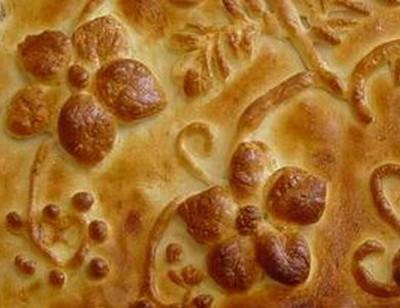You will need
- Wheat flour of the highest grade – 600 – 700 gr;
- Margarine – 100 g;
- Yogurt – 300 - 400 ml;
- Vegetable oil – 1 tablespoon;
- Yeast cake – about 2 tablespoons;
- Milk – 100 - 200 ml (total amount of liquid should be equal to half a liter
- this includes yogurt and milk
- used for cultivation of yeast);
- Salt
- sugar;
- Enameled pan for 5 – 7 litres;
- Clean cotton cloth or towel;
Instruction
1
Sift the flour through a sieve. This is to ensure that the flour is saturated with oxygen, and the dough was more lush.
2
Melt the margarine in a saucepan but do not boil. Add in the melted margarine, one tablespoon of salt and two tablespoons of sugar. Mix thoroughly. Then add a tablespoon of vegetable oil. Again stir and cool slightly.
3
Add 400 – 450 ml of kefir. Instead of yogurt can use sour milk, stale even. Mix.
4
Now dissolve the yeast. To do this, use a sufficiently large container with a volume of 400-500 ml, as yeast increase in volume very much.
Warm up 100 – 200 ml of milk. The milk temperature should not be above 40 degrees, otherwise the yeast will not rise. To determine the temperature of the milk, take into consideration the fact that human body temperature is about 37 degrees. That is, the finger dipped into the milk should feel just slightly warm or even not feel neither heat nor cold.
Warm up 100 – 200 ml of milk. The milk temperature should not be above 40 degrees, otherwise the yeast will not rise. To determine the temperature of the milk, take into consideration the fact that human body temperature is about 37 degrees. That is, the finger dipped into the milk should feel just slightly warm or even not feel neither heat nor cold.
5
Add the milk a little sugar. The milk should be slightly sweet. Dissolve yeast in warm milk. Mash thoroughly, to get all the pieces of the yeast. Put the bowl of dissolved yeast in warm but not hot place for 8 – 10 minutes. Good, fresh yeast solidifies after three to five minutes, and you will see on the surface of the milk produced foam.
6
In a pan with margarine and pour the yogurt in the flour but do not mix. Flour should slide right on the surface of the mixture of yogurt and oil.
Make a well in the hill deepening and pour in that hole rising yeast. Mix the yeast with the flour first, and then lift from the bottom of the melted fat. In any case do not allow the yeast is first mixed with the margarine. Fat coats the yeast and the dough may not rise.
Make a well in the hill deepening and pour in that hole rising yeast. Mix the yeast with the flour first, and then lift from the bottom of the melted fat. In any case do not allow the yeast is first mixed with the margarine. Fat coats the yeast and the dough may not rise.
7
Begin kneading the dough, try to keep a spoon or phallus was moving in the same direction, so the dough will be more elastic and the finished product is magnificent.
At this stage, the dough consistency reminiscent of thick cream. Do not try to thicken it: the flour will pick up moisture and the dough will be denser. Cover the pan with a clean towel and put in warm place to rise.
At this stage, the dough consistency reminiscent of thick cream. Do not try to thicken it: the flour will pick up moisture and the dough will be denser. Cover the pan with a clean towel and put in warm place to rise.
8
About an hour make the first obmenka. Mix the dough by hand and leave to rise for an hour.
9
After an hour ebonite the dough in the pan and place on a cutting Board, sprinkled with flour. Remember the old saying "the Dough handles like. Don't be lazy, Ammonite the dough with your hands for at least five minutes, several times to lift it and throw on a cutting Board. This will remove the dough from the excess carbon dioxide. Ready dough does not stick to hands, plastic, elastic. Press down on the dough with your finger, the hole should immediately disappear.
Your dough is ready. Of this amount, you can cook two pies the size of a standard baking oven.
Your dough is ready. Of this amount, you can cook two pies the size of a standard baking oven.
Useful advice
The finished dough can be stored in the refrigerator at temperature 4 to 6 degrees a day.
